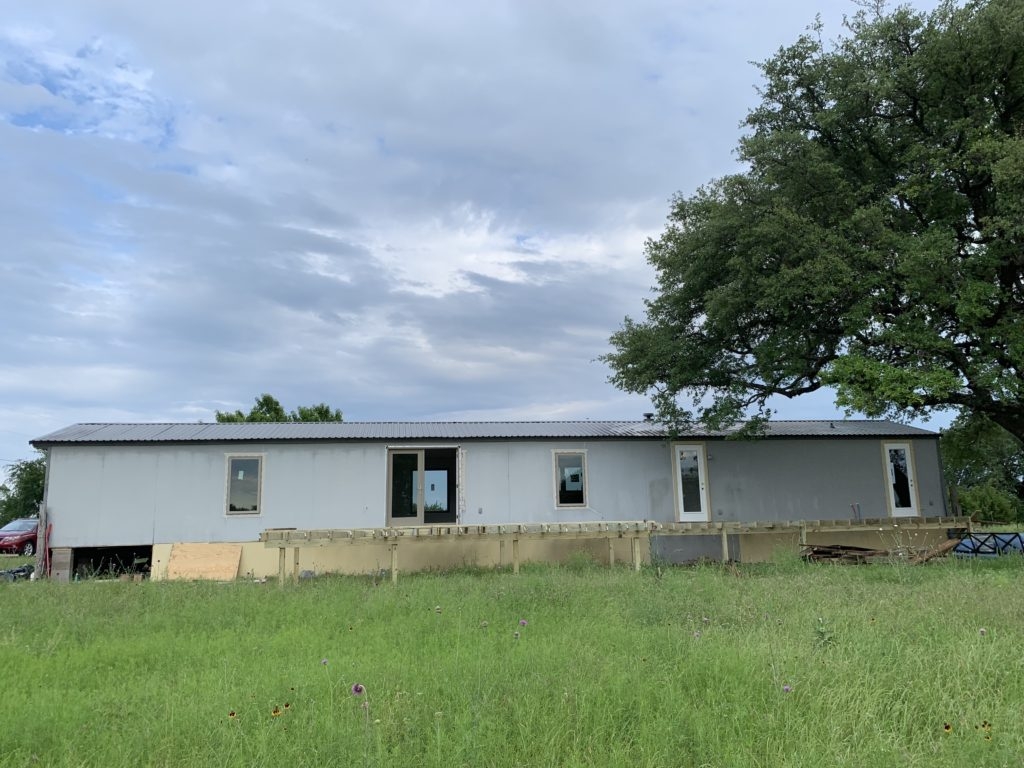This old mobile home
“What is it with you and mobile homes?”
That’s the nutshell summary of reader questions about my recent columns on remodeling two manufactured homes in Texas Hill Country.
Part of the answer is personal. The homes we’re restoring were on the property we bought, abandoned. My wife and I dislike waste. We also liked the challenge. We thought we could create a beautiful place to live while saving the cost of building a new, conventional house.
But I’ve been fascinated by manufactured housing for half a century. That fascination has very practical roots.
— A house is the largest purchase most people ever make.
— Keeping a roof over our heads is the largest single monthly expense most people ever have.
— Shelter accounts for 40.2 percent of expenses in the consumer price index for all urban consumers. It’s even higher in the Consumer Price Index for the elderly, 44.5 percent.
So our shelter decisions are the biggest lever we have for controlling our lifetime spending. What we do about shelter while we’re working and when we’re retired is nearly as important as Social Security. For many, it can be more important than retirement saving – or it can compensate for insufficient retirement saving.
Bottom line: How we choose the roof over our heads is a really big deal.
And how we make that choice is changing because people are starting to “think different.”
Google “tiny homes” and you’ll find over 366 million results. These are truly tiny houses. They pack everything into about 150 square feet. Yes, you read that right: 150 square feet. Some people would consider that a barely adequate walk-in closet. Frustrated by home prices and apartment rental costs, people are looking for an alternative.
That’s what happens when you confront absurdity and frustration every day. Skeptics should consider the bizarre reality of San Francisco. According to Zillow, the cost of a typical home in San Francisco is now $1,357,500.
The housing problem isn’t limited to a handful of freakishly priced cities. It’s national. While some markets are hotter than others, we’re in a seller’s market for homes and apartment rentals.
Google “park models” and you’ll get over a trillionresults. A park model home is a genre of recreation vehicle, limited to 399 square feet as RVs are, but built to look like a conventional home rather than an RV. These homes are like small one-bedroom apartments.
Tiny homes and park models represent a radical change in shelter expectations. Significantly, while over 60 percent of households still own their homes, we’re back down to the ownership rate of the 1960s. We’re now well below the 69 percent peak in 2004. To make matters worse, apartment rentals have also vaulted in price.
Ultimately, the problem with conventional homes comes down to one thing: They cost too much. In 2016, according to the U.S. Commerce Department’s Census Bureau, the average new, site-built home sold for $372,500. Of that amount, $85,686 was for land. In the same year the average singlewide cost $46,700 for 1,075 square feet.
That means you could spend nearly $39,000 for land and related service improvements, and your total cost of shelter would be no greater than the cost of land for a conventional house. Equally important, you would have land and home for 23 percent of the cost of a conventional house. Give up a good deal of space and shelter becomes doable instead of impossible.
But the advantage of mobile homes for shelter doesn’t end there. Unlike most conventional homes, mobile homes depreciate in value. That isn’t good for the first buyer. But it means the second buyer gets an even better deal for shelter. Just a few years ago I could find and write about resident-owned communities in Florida. It was possible to buy a used manufactured home, with land, for under $50,000. If you purchased in cash, your monthly cost of shelter, excluding taxes, utilities and insurance, would be about $250.
Does this mean manufactured homes are a 100 percent Blue Sky deal? Absolutely not. Financing them typically comes at higher interest rates than conventional homes. They’re also difficult to refinance because they depreciate. Owners who don’t have additional cash to pay down their loans can end up trapped.
Those conditions, however, mean cash buyers can enjoy better prices. It’s a mixed bag that leans toward cash buyers.
Related columns:
Scott Burns, “Two ways to own a manufactured home,” 3/6/2015 https://scottburns.com/two-ways-to-own-a-manufactured-home-2/
Scott Burns, “The secret of crystal bay,” 2/27/2015 https://scottburns.com/the-secret-of-crystal-bay/
Scott Burns, “You, too, can live near water,” 3/13/2015 https://scottburns.com/you-too-can-live-near-water/
Earlier columns in this series:
Scott Burns, “This old mobile home: raze or save?,” 1/12/2019 https://scottburns.com/this-old-mobile-home-raze-or-save/
Scott Burns, “This old mobile home: The Joy of Tear-Out,” 2/25/2019 https://scottburns.com/joy-of-tear-out/
Scott Burns, “On the level … and going with the flow,” 3/8/2019 https://scottburns.com/on-the-level-and-going-with-the-flow/
Scott Burns, “Stuff: Do we really need it?,” 4/20/2019 https://scottburns.com/stuff-do-we-really-need-it/
Scott Burns, “This Old Mobile Home: Lessons from a Book Purge, 5/7/19 https://scottburns.com/this-old-mobile-home-lessons-from-a-book-purge/
Scott Burns, “Making Things Happen: Real-Time vs. Internet Time,” 5/19/2019 https://scottburns.com/real-time-living/
Sources and References:
Home price data from the St. Louis federal reserve bank https://fred.stlouisfed.org/series/RHORUSQ156N
Zillow: recent San Francisco home values http://www.zillow.com/san-francisco-ca/home-values/
US Census Bureau data comparison of manufactured home to stick built costs https://www.manufacturedhousing.org/wp-content/uploads/2018/05/2016-US-Census-MH-vs-SB.pdf
Bureau of Labor Statistics: comparison of CPI-U, CPI-W and CPI-E https://www.bls.gov/opub/ted/2012/ted_20120302_data.htm
This information is distributed for education purposes, and it is not to be construed as an offer, solicitation, recommendation, or endorsement of any particular security, product, or service.
Photo: Scott Burns, May 31, 2019. The Redman, now named “The Taj,” is nearing completion. We’re moving in during the next week.
(c) Scott Burns, 2019
